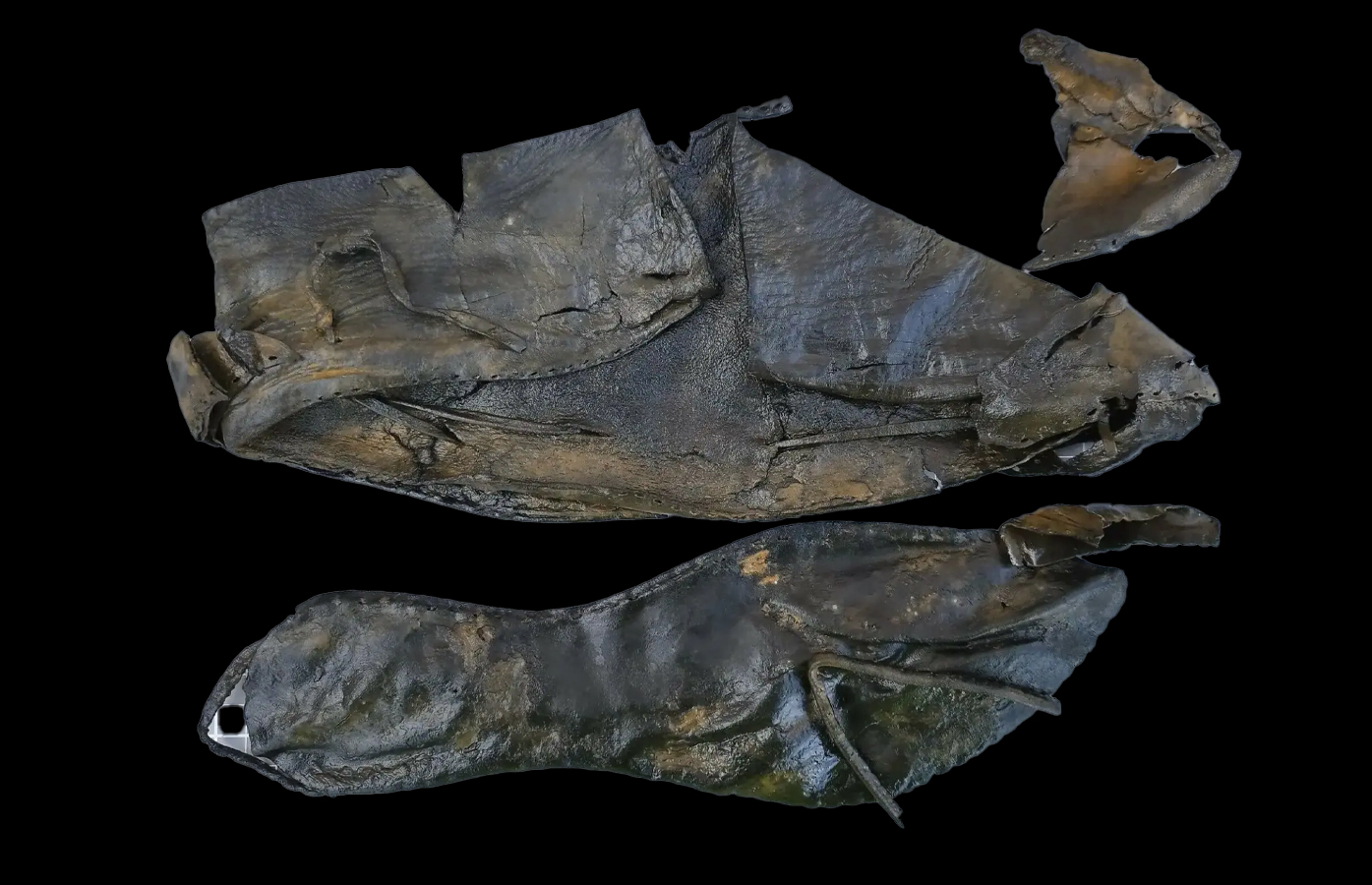Archaeologists have unearthed a trove of nearly 3,000 medieval objects in Oslo’s port district of Bjørvika, Norway.
The discovery mostly consists of leather goods, including shoes, bags, and knife sheaths, providing new insights into the everyday lives of people who lived in the city 600 to 700 years ago.
The shoes range from simple low-cut designs to tall boots with decorative patterns. Evidence of wear shown by creased leather, worn soles, and repeated repairs, suggests that footwear was highly valued and carefully maintained.
In addition to footwear, archaeologists unearthed at least 20 bag fragments, few of which are identical. The variety in shape and construction indicates these items were customised for different functions. Without pockets in their clothing, medieval Norwegians relied on these leather bags to carry daily essentials, often wearing them on belts or tying them into garments.
The site has also yielded numerous knife and sword sheath fragments, underscoring how integral personal knives were at the time. Many of the items likely originated from rubbish heaps near the Alna River, later washed to the site by seasonal floods over several centuries.
Among the rarest of finds are over 40 children’s shoes, some of which are as small as modern size 22, fit for toddlers as young as one.
“We think that these objects were likely thrown away near the Alna River,” says archaeologist Marja-Liisa Petrelius Grue. “Many of them were used for a long time. We can see that from the repairs. Then they were discarded in a rubbish heap sometime during the Middle Ages.”
This rubbish heap may have remained in place for quite a while. More precisely, several hundred years.
“When major spring floods occurred, they likely cut into the rubbish heaps and carried the objects away. That may have happened long after the items were thrown out. They could have been washed down there during the 1500s, 1600s, or even 1700s,” says Grue.
Header Image Credit : Norwegian Maritime Museum
Sources : Norwegian Maritime Museum





